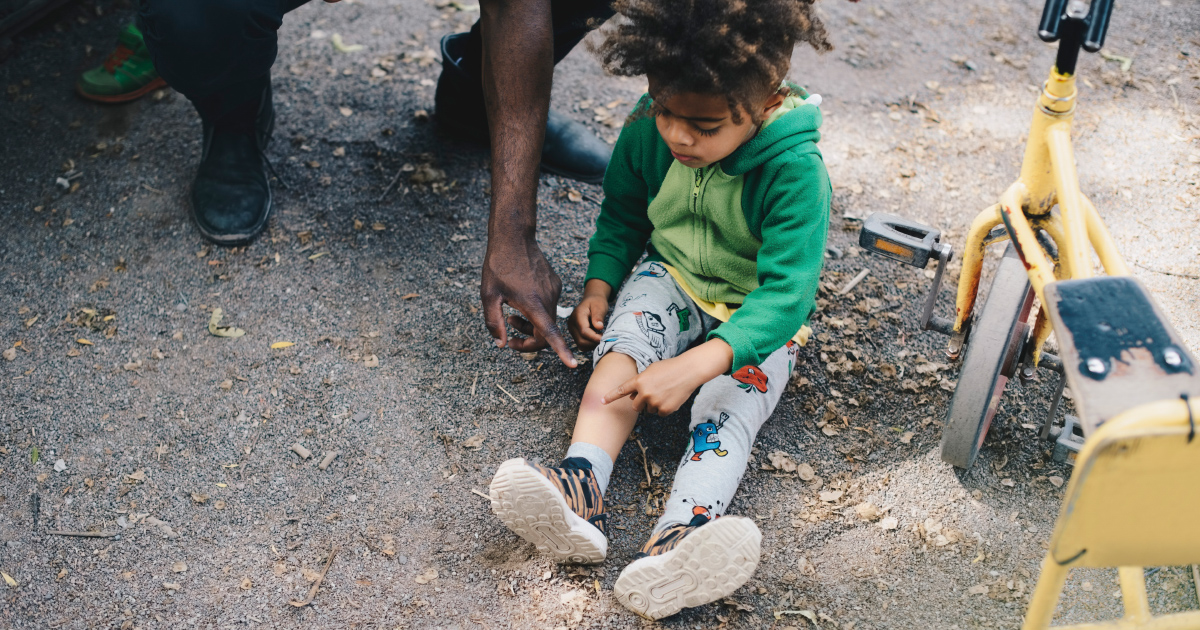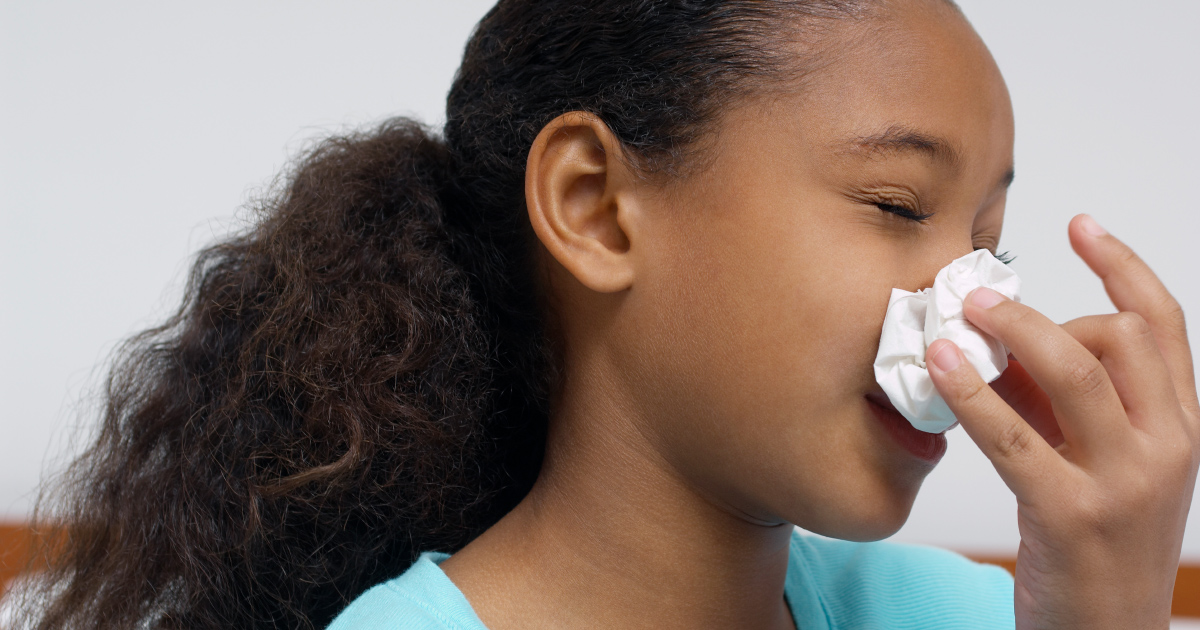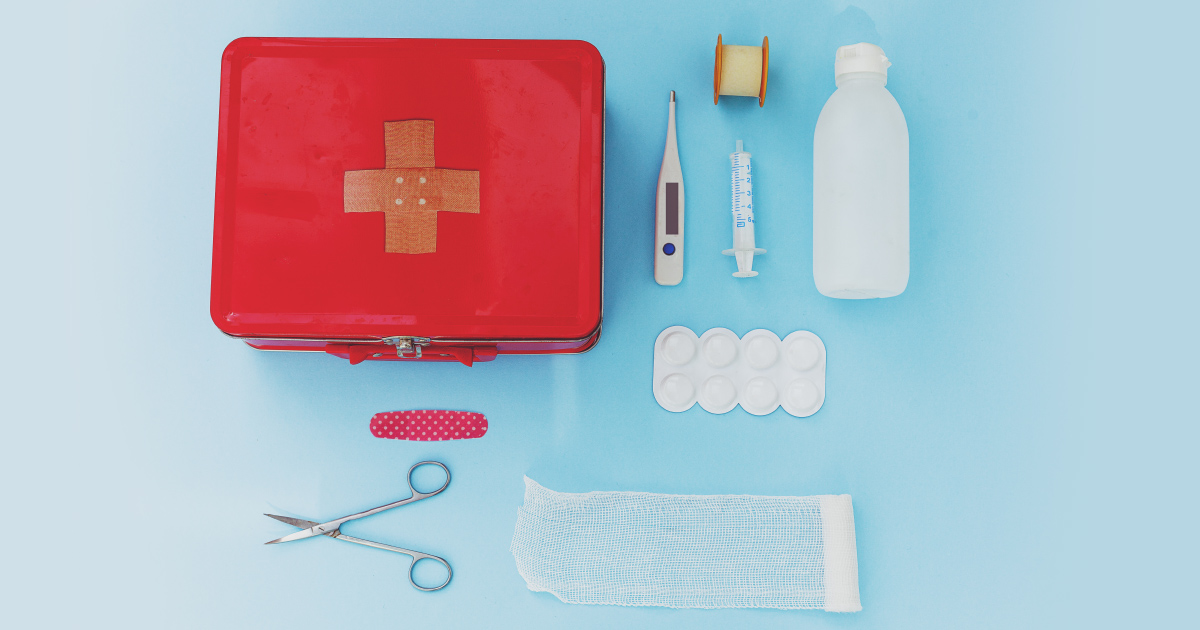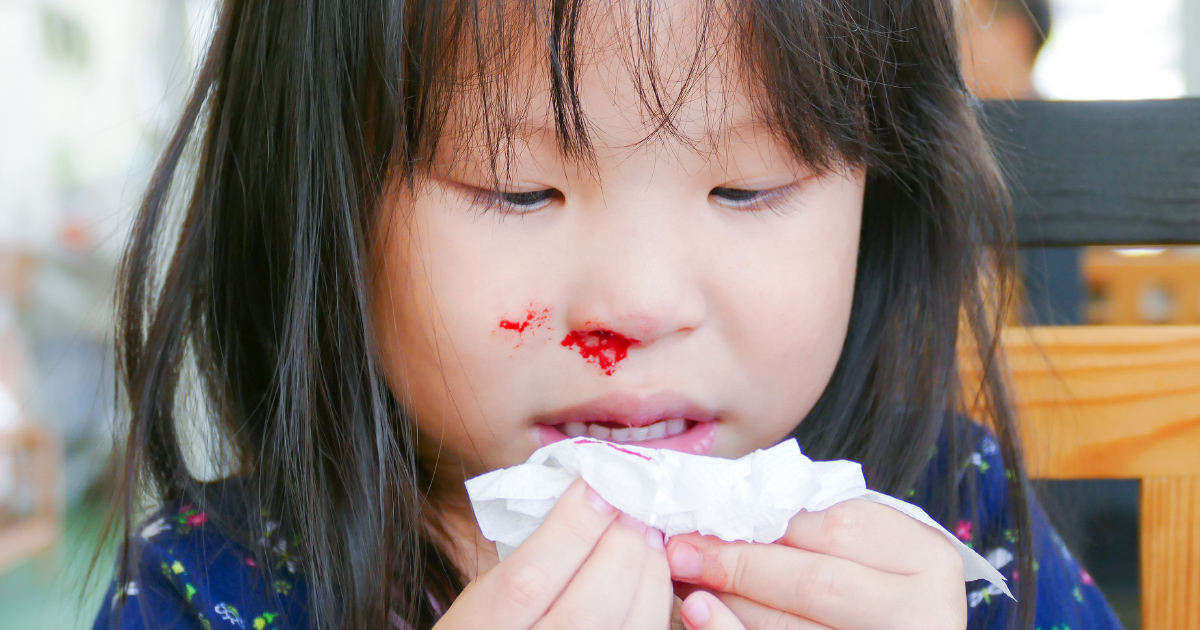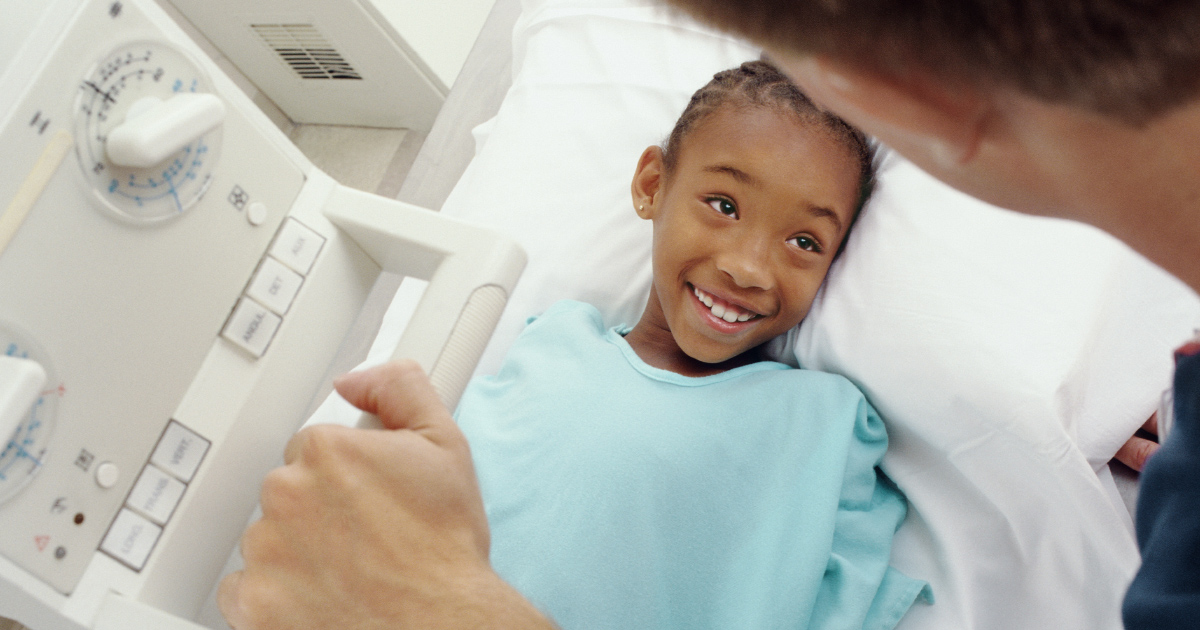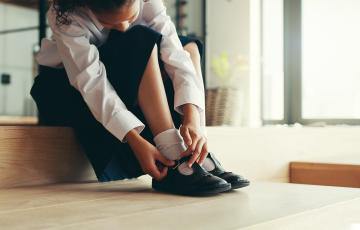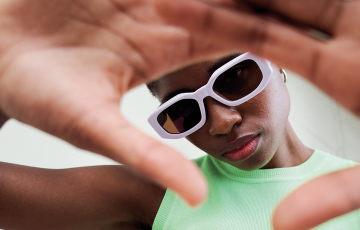The A-Z of children’s health

From babies to teens, children seem to pick up bugs faster then Usain Bolt can sprint a 100 metres. But with our handy guide, keeping them healthy is as easy as A-B-C.
A is for Asthma: If your child suffers from asthma or any other life-threating allergies, make sure your child carries their inhaler at all times. Even though schools require written permission from a parent to administer any medication (even paracetamol), they will keep a spare inhaler or an EpiPen in the office. Make sure they are clearly labelled with your child’s name. For more advice read here or visit asthmasa.org.
B is for Bumps: Bruises and cuts can usually be soothed with a cuddle and a plaster, but head injuries could need more attention. A child with a concussion may have a headache and feel dizzy. It may not be a hard hit that causes a concussion. In most cases, the child does not lose consciousness and symptoms can appear hours or days after an injury. If your child has nausea, a headache, dizziness or blurred vision, head to your doctor or ER for a check-up.
C is for Chickenpox: This is caused by the varicella-zoster virus and can result in a fever, nausea, a sore throat and then a rash. Treat the fever with an infant or children’s Paracetamol. Because chickenpox is so contagious, a child who has it should stay home and rest until the rash is gone and all blisters have dried. This usually takes about 1 week. For the itching, apply soothing calamine lotion. If you’re unsure about whether your child is ready to return to school, ask your doctor. Read more about chickenpox and vaccinations here.
D is for Dehydration: Sometimes kids lose fluids and salts through fever, diarrhoea, vomiting, or sweating, which means your child is losing essential fluids. Don’t wait until they say they are thirsty – encourage them to sip plenty of water, in frequent, small sips, especially if the child is vomiting. For severe dehydration, the child may need IV fluids in the hospital. If you feel that your child is not improving or is getting worse, see your doctor right away.
E is for Earache: Ear infections – which can be extremely painful – is common in childhood, often after a cold or flu. There may or may not be enlarged tonsils and/or a fever. Pain medication may be given but visit your GP if the pain persists or there is a discharge from the ear.
F is for Flu: Cold and flu season is here. As the strains of flu virus can change from year to year, receiving a flu vaccine every year provides the best protection against current flu virus strains. The best time to vaccinate is autumn, but it can be given at any time during the flu season and it usually takes up to two weeks for the flu vaccine to provide protection. If your child does fall ill, treat the symptoms with rest, additional fluids and saline nose drops or spray. Only use cold medication if recommended by your doctor. In all cases, if nasal discharge is yellow and thick and/or there is a fever, see a doctor.
G is for Glandular fever: Passed through saliva, “the kissing disease” is quite common in teenagers. Symptoms include a high temperature, extreme tiredness, and swollen glands in the neck and underarms. A doctor might do a blood test to make sure that your child does have glandular fever. There’s no treatment but symptoms can be eased with rest, painkillers and plenty of fluids.
H is for Hand, Foot and Mouth: The highly contagious Coxsackie virus causes painful sores in the mouth and throat and is common in children up to 10 years of age. The sores last about 10 days and are usually accompanied by blisters on the hands and feet. Treat with pain medication and keep your child at home. Watch out for dehydration as kids may reject liquids and avoid acidic juice or food.
I is for Itches: Most kids get itchy rashes at one time or another but up 20% of children suffer from atopic eczema, which they thankfully often grow out of. To help ease their itches, use cotton bedding, change to using fragrance-free shampoos and soaps and ban pets from their rooms. It is important to have a regular schedule with eczema care that includes bathing with a gentle cleanser and moisturising to lock water into the skin. Moisturised skin helps control flare-ups by combatting dryness.
J is for Jelly multivitamins: Can’t get your picky little eater to swallow a pill? Gummy vitamins are easy to chew and can usually be taken by people who have difficulty swallowing pills. So gummy vitamins may be simpler for kids to add to their routines and take on a more regular basis.
K is for Kit: Whether home or away, make sure you’re always prepared with a well-stocked first aid kit. Stock it with a thermometer, plasters, kids’ ibuprofen, and paracetamol, antiseptic wash or wipes, an insect bite relief, and an anti-bacterial ointment.
L is for Lice: Head lice are tiny bugs about the size of a sesame seed that can attach to the hair of anyone’s head. It doesn’t matter if the hair is clean or dirty and it doesn’t matter how clean, dirty, rich, or poor the person is. The most effective way to treat head lice is with head lice medicine. After each treatment, using the comb-out method every two to three days for two to three weeks may help remove the nits and eggs. Head lice medicine should be used only when it is certain that your child has living head lice. So check with a pharmacist first.
M is for Meningitis: Serious and potentially disabling or even fatal, this is a bacterial or viral infection of the membranes around the brain and spinal cord. Symptoms can be similar to those of the common flu, including fever, rash, vomiting, headache, stiff neck, sensitivity to light, and drowsiness. If a red or purple pinprick rash develops, try the ‘glass test’ – press the side of a clear glass firmly against the skin, the spots/rash may fade at first – but keep checking.
Fever with spots/rash that does not fade under pressure is a medical emergency. If your child is ill and getting worse, do not wait for a rash to appear, get medical help immediately. For more information visit comomeningitis.org.
N is for Nose Bleeds: While nosebleeds in children can seem dramatic, they’re not usually serious. The most common cause of nosebleeds in children is dry air that both irritates and dehydrates nasal membranes which could be helped with a nasal saline spray. Other culprits are scratching or picking, trauma and a cold, allergy or sinus infection. You can help slow down your child’s nosebleed by making them sit in a chair in an upright position and then gently tilting their head forward slightly. Pinch the soft part of the nose below the nasal bridge and ask your child to breathe through their mouth while you (or your child, if they are old enough) do this. Try to maintain pressure for about 10 minutes. Stopping too early may make your child’s nose begin bleeding again. You can also apply ice to the bridge of the nose, which may reduce blood flow.
O is for Omega 3: These are essential fatty acids that help feed the brain and keep it healthy and help the body absorb nutrients. Omega-3 fats also are important for eye function. They are found in oily fish like sardines. Offer a variety of food sources of omega-3 fats before trying over-the-counter supplements. Serve fish in kid-friendly ways, but if your kids aren’t into fish, try using flaxseed oil.
P is for Puberty: This starts between ages 8 and 13 in girls and ages 9 and 15 in boys and is the name for the time when their bodies begin to develop and change from kid to adult. We’re talking about stuff like girls developing breasts and boys voices breaking. During puberty, their bodies will grow faster than at any other time, except for when they were babies. It can be an emotional and confusing time, so encourage your teen to talk to you or another trusted adult.
Q is for Questions: Got a query or concern about your baby or teen? If you’re a Jet Club member next time simply call the Jet Club call centre and speak to our qualified nurses anytime day or night. Read here on how to use this benefit.
R is for Reye’s Syndrome: This is a rare but serious condition that causes swelling in the liver and brain. It can affect children and teenagers recovering from a viral infection, most commonly the flu or chickenpox. The number of cases has been rare since doctors discovered the connection between giving aspirin to kids and teens, especially during viral illnesses. In general, kids and teens should not take aspirin except on the advice of a doctor for certain conditions.
S is for Slapped Cheek Syndrome: This oddly named illness is a common and highly contagious childhood ailment causing a distinctive face rash, which looks as if the cheeks have been slapped. Symptoms include a sore throat, slight fever, upset stomach, headache, and itching. The virus usually clears up on its own, but pain relievers may help to keep your child comfortable. Once they’ve had the infection, they are usually immune to it for life.
T is for Tonsillitis: This occurs when the two oval-shaped pads of tissue (tonsils) at the back of the throat become inflamed. Signs of tonsillitis include swollen tonsils, sore throat, difficulty swallowing and tender lymph nodes on the sides of the neck. Treatment comes in the form of lozenges, throat sprays, and antiseptic gargles. Visit your GP if your child has pus-filled white or yellow spots on their tonsils and temperature that doesn’t respond to paracetamol or Ibuprofen.
Antibiotics may be needed but although they can kill some bacteria, they cannot kill viruses, and mostly tonsillitis is caused by viruses.
U is for Urinary Tract Infections (UTIs): Surprisingly these are common in kids. They happen when bacteria (germs) get into the bladder or kidneys.
A baby with a UTI may have a fever, throw up, or be fussy. Older kids may have a fever, have pain when peeing, need to pee a lot, or have lower belly pain.
Children with UTIs need to see a doctor as these infections won’t get better on their own. UTIs are easy to treat and usually clear up in a week or so. To be sure the antibiotics work, you must give all the prescribed doses – even when your child starts feeling better.
V is for Vomiting: Throwing up can be a sign of tummy trouble. Gastroenteritis (gastro) is a bowel infection, usually caused by a virus. It causes runny, watery poo and sometimes vomiting. Children with gastroenteritis need to drink plenty of fluids. If your baby is less than 6-months-old and has vomiting or diarrhoea you should see a doctor urgently. Babies can become dehydrated quickly.
W is for Worms: If your child complains about an itchy bottom which gets worse at night, it’s worth checking your child for threadworms. If you examine your child at night, take a torch, separate your child’s buttocks and look carefully around the anus (and the opening to the vagina in girls). You might see tiny white threads that may be moving. Talk to a pharmacist about over-the-counter treatment options and treat all the family members at the same time, even if they aren’t showing any symptoms. Adults can also get threadworm.
X is for X-Rays: These allow doctors to see bones and organs within your child’s body. An X-ray is quick, painless and safe and the hardest part may be keeping them still for a few seconds while the X-ray is taken. It’s important to hold still during an X-ray because any movement can cause the image to be blurry. Depending on the part of the body being x-rayed, your child may be asked to wear a lead apron to help decrease the radiation exposure to areas not imaged.
Y is for Yeast Infections: Changing hormone levels that begin during puberty can lead to yeast infections. Older girls are more likely to get a yeast infection right before their periods in the vagina and surrounding area. In fact, about 75 percent of all females will get a yeast infection at some point. The infection usually isn’t serious but can be bothersome. Symptoms often include itching, burning, and a clumpy white discharge. Yeast is actually a fungus, so your paediatrician can prescribe topical anti-fungal creams, ointments or suppositories to clear up an infection.
Z is for Zits: These are the curse of every teen’s life but there are different types of acne that affect newborns, infants and younger children. Oil, dead skin cells and bacteria block pores and cause small bumps called blackheads or whiteheads. These can be treated with over-the-counter face washes or creams. Acne, however, can cause problems with your teen’s self-esteem and may cause scarring, so ask your GP about treatments.
Serious illness and conditions are rare but if you are concerned about your child’s health always see your GP or in emergencies go to an ER. Jet Club members can also make use of our Medical Careline or the Jet Club Pharmacy Benefit which gives you discounted rates on immunisations and consultations.
Lastly don’t forget to keep a stash of funny books, card games and DVDs handy for when your child is feeling unwell. Remember laughter is the best medicine.
Sources: kidshealth.org; healthfinder.gov; www.healthline.com; cedars-sinai.org
Related articles

Latest Jet club magazine
We’ve got the latest trends, exciting prizes and exclusive savings just for you!
Jet Club will not pass your details to anyone else. By clicking the subscribe button you confirm you have read and agree to the Jet Club Terms and conditions and Jet Club Privacy Statement.
Subscribe